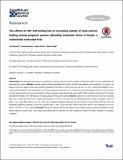| dc.contributor.author | Marwa, Tom | |
| dc.contributor.author | Karanja, Sarah | |
| dc.contributor.author | Osero, Justus | |
| dc.contributor.author | Orago, Alloys | |
| dc.date.accessioned | 2022-03-26T10:20:56Z | |
| dc.date.available | 2022-03-26T10:20:56Z | |
| dc.date.issued | 2019-07-16 | |
| dc.identifier.citation | Marwa T, Karanja S, Osero J, Orago A. The effects of HIV self-testing kits in increasing uptake of male partner testing among pregnant women attending antenatal clinics in Kenya: a randomized controlled trial. Pan Afr Med J. 2019 Jul 16;33:213. doi: 10.11604/pamj.2019.33.213.14160. PMID: 31692660; PMCID: PMC6814341. | en_US |
| dc.identifier.issn | 1937-8688 | |
| dc.identifier.other | doi:10.11604/pamj.2019.33.213.14160 | |
| dc.identifier.other | PMID: 31692660 | |
| dc.identifier.other | PMCID: PMC6814341 | |
| dc.identifier.uri | https://repository.amref.ac.ke/handle/123456789/630 | |
| dc.description | © Tom Marwa et al. The Pan African Medical Journal - ISSN 1937-8688. This is an Open Access article distributed under the terms of the Creative Commons Attribution
License (http://creativecommons.org/licenses/by/2.0), which permits unrestricted use, distribution, and reproduction in any medium, provided the original work is properly
cited. | en_US |
| dc.description.abstract | Introduction: HIV self-testing could add a new approach to scaling up HIV testing with potential of being high impact, low cost, confidential, and empowering for users.
Methods: Pregnant women attending antenatal clinics (ANC) and their male partners were recruited in 14 clinics in the eastern and central regions of Kenya and randomly allocated to intervention or control arms at a ratio of 1:1:1. Arm 1 received the standard of care, which involved invitation of the male partner to the clinic through word of mouth, arm 2 received an improved invitation letter, and arm 3 received the same improved letter and, two self-testing kits. Analysis was done using adjusted odds ratios (aOR) at 95% confidence intervals (CI) to calculate and determine effects of HIV self-testing in increasing uptake of male partner testing.
Results: A total of 1410 women and 1033 men were recruited; 86% (1217) women and 79% (1107) couples were followed up. In arm 3, over 80% (327) of male partners took HIV test, compared to only 37% (133) in arm 2 and 28% (106) in arm one. There was a statistical significance between arm one and two (p-value=0.01) while arm three was statistically significant compared to arm two (p-value<0.001). Men in arm three were twelve times more likely to test compared to arm one (aOR 12.45 (95% CI 7.35, 21.08)).
Conclusion: Giving ANC mothers test kits and improved male invitation letter increased the likelihood of male partner testing by twelve times. These results demonstrate that HIV self-test kits could complement routine HIV testing methods in the general population. | en_US |
| dc.language.iso | en | en_US |
| dc.subject | ANC mothers | en_US |
| dc.subject | HIV self-testing | en_US |
| dc.subject | Drivers and barriers | en_US |
| dc.subject | Male involvement | en_US |
| dc.subject | Male partners | en_US |
| dc.subject | Randomized controlled trial | en_US |
| dc.title | The Effect of Bi-annual Community-directed Treatment with ivermectin on the incidence of epilepsy in onchocerciasis endemic villages in South Sudan: a study protocol | en_US |
| dc.type | Article, Journal | en_US |

